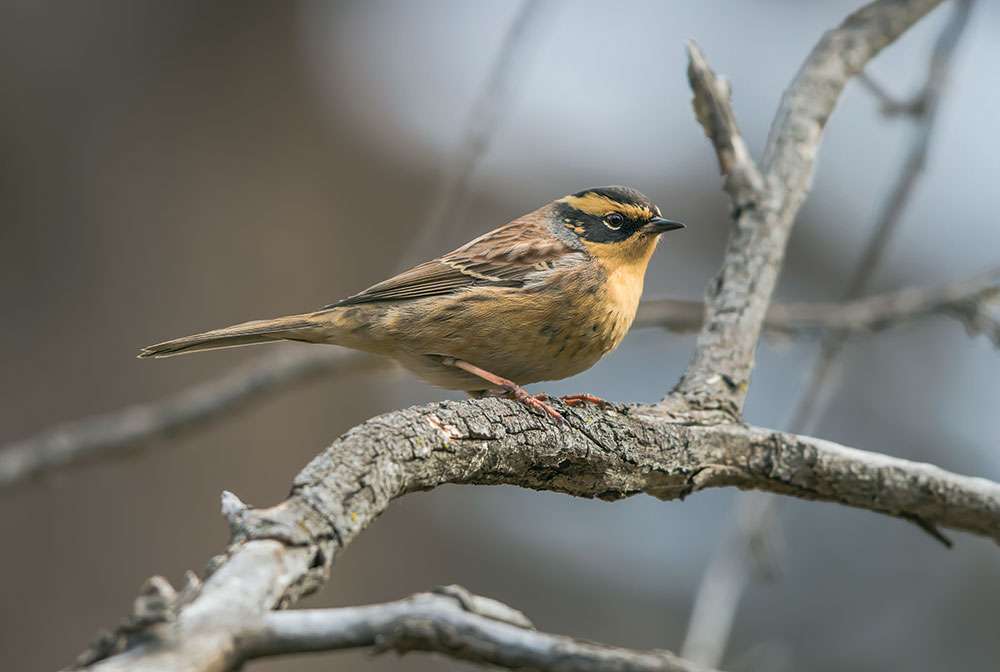
Siberian Accentor
With winter approaching, many bird species have been escaping the bitter north and relocating in recent weeks. That’s usual.
However the prolonged easterly and north easterly winds of late September and October 2016 were unprecedented in many birders’ memories – and they left behind a spectacular feast of migrants that nobody could have predicted.
Chief among them was a species that figures alphabetically first on the index of birds for this part of the world, known as the Western Palearctic. But it was about the last thing any birder in Britain ever expected to turn up.
An Accentor. More specifically – a Siberian Accentor. We’d all admired its picture in books and dreamed of seeing one since we were kids.
But with not even one ever having made it to Britain, and the nearest breeding population some 2,400 miles from Cranleigh in Arctic Russia, we knew it would stay a dream. There weren’t even reckoned to be more than 1,000 pairs within our ecozone.
So the little streaky, rusty and brown bird, sporting a black cap and cheek-patch and a broad buffy stripe (supercilium) above its eye, was destined to stay the mythical creature it always had been. Far out of reach with a frozen wasteland between us.
My local birding mates Matt (@mostlyscarce) and Ed (@Godalming_birds) had asked me to join them on a trip to The Shetlands. But I declined, reasoning that a good bird could turn up on the mainland and I’d be trapped on the islands and unable to get to it. So what happens? Off they go and they are just about to take the boat from Aberdeen when mega news comes through. In a quarry, just down the road from where they are going to be staying, someone has found a ‘first for Britain.’ You guessed it. A Siberian Accentor!
Oh no! My heart missed a beat while theirs increased to epic proportions as they wished the night ferry could only go faster. They ensured word soonvcame through to me next day. The bird was still there – and they’d just got it! Seeing pictures of them holding their cameras showing photos of the bird really rubbed it in. Gotcha!
Of course, I was very happy for them but a bit gutted for myself. Next day the bird had gone. Oh well, you can’t see everything. But then something even more crazy happened. Three days later news came through that a second bird had been found. This was unbelievable! And this time it was much nearer to home, on the east coast of Yorkshire, near Spurn. The trouble was that news only came out in the afternoon so we could not get there until dark. I didn’t sleep well that night.
At first light the next day my friend Hugh and I heard it was still present. Yippee! So off we set, sweating most of the journey for fear it would fly off before we arrived. We need not have worried. By lunchtime we were watching it closely, feeding apparently ravenously alongside two slightly larger Dunnocks. Elation!
According to Collins Bird Guide the Siberian Accentor, which should have been wintering in completely the other direction – Korea and eastern China – is ‘shy, keeps mostly to cover.’ Well, not this one.
As it fed, pecking among the leaves and moss on an old school playground, it came within 10 feet of us and we didn’t even need binoculars. What a moment. It nearly landed on one bloke’s head. We’d never seen it before – and it had probably never seen humans before.
After that, the day got even better as we saw two rare Dusky Warblers among a fall of other scarce arrivals and ‘Sibes’ in the vicinity that had been brought in by the winds. They included Rose-coloured Starling, Pallas’s Warbler, and Olive-backed Pipit. Someone counted over 500 Robins. The bushes were dripping with them.
For the next few days it became clear this Siberian Accentor’s arrival was far from a one-off. More began appearing at various sites along the east coast and northern islands. As I write there have now been 12 in Britain and getting on for 300 in at least 10 other countries in a narrow band across northern Europe. The birding world has never seen anything like it.
Only time will tell if there is a repeat of this ‘irruption’, which is thought to have been partially fuelled with the help of an excellent breeding season due to exceptionally high insect numbers.
In time, who knows, Siberian Accentor could become a regular bird in Britain and might even make it onto the Cranleigh list.
For me, it was a very special early Christmas present. I hope you get something brilliant on 25 December you’ve dreamed a lot about too.
Twitter – @Crane_Spotter











